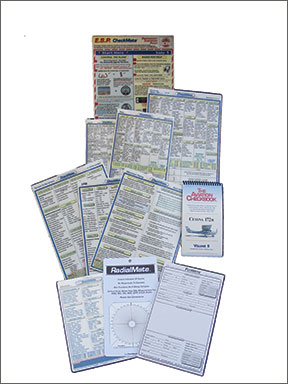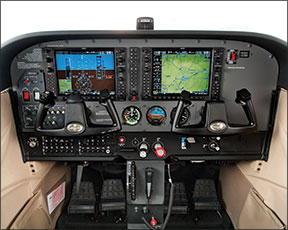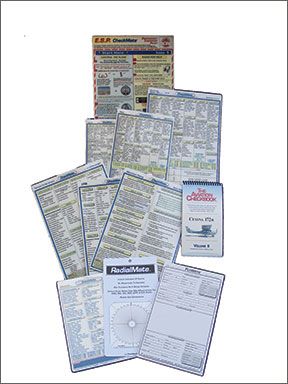I once had an emergency while serving as pilot in command. It was a big one. It was the type of emergency that means you will shortly be landing somewhere, anywhere, so you best hurry up and get ready. There were red-box—or bold—items, the ones you memorize, to perform. Fortunately, not too many. And in the 90 seconds from the start of my emergency until we were egressing from the cockpit, there was a moment.

It came when every item on my emergency checklist for landing was complete. There was nothing else to say to ATC about my problem and I’d briefed my passengers. We were about 300 feet off the surface of the water on which I was about to land the airplane, and it felt like time had slowed perceptibly—I had a moment to think. I saw my set up, with a smooth, flat body of water ahead of me and asked myself the question all of us should ask on short final: “Landing checklist complete?” I remember my leg suddenly shaking.
I slapped my thigh hard to stop it, then looked down to my airspeed: good; my configuration: good; my doors: cracked and propped; my knobs and levers: off and good. I pulled my shoulder harness tight against my chest with a yank. I remember my next thought like it has been carved into my brain: You’ve got this. To my passengers I said simply: “Brace.”
Pre-planning
Some people like to tell me that was my moment as a pilot—but they are wrong. Sure, it was memorable, but mostly for its urgency. Otherwise, it was identical to the many other critical junctions I encounter during any flight. These days, when I line up in my Kitfox IV for takeoff, I assure you I’m paying just as rapt attention to the environment, my position on the runway, the goings on in front of me and in the pattern around and above me. In any aircraft I fly and at many different points in the flight, I ask the same question of myself: “Checklist complete?”
That phrase is my cue to check one more time that switches are correct; knobs are where they should be, controls are trimmed and flying surfaces (flaps) are in position; frequencies are set; and power is where it should be for the conditions at hand. Are my passengers briefed and ready? If so, I can then think, “Let’s roll those wheels on” as I settle onto the glidepath from my turn to final, feel the cush of ground effect under my broad, fat wing, finessing the flare and, if I’m lucky and conditions are right, touch down smoothly.

But hope isn’t all that my final checks trigger. Those checks also set off a cascade of scenarios my brain needs to have ready front and center in case of anomalies.
For example, say the wind shears abruptly to a hard tailwind:
Hit the power and raise the nose to neutral; gather flying speed; retract flaps; trim nose to climb; establish positive rate; go around.
nd what if another airplane suddenly toddles onto my landing runway?
Hit the power and raise the nose to neutral; gather flying speed; retract flaps; trim nose to climb; establish positive rate; go around.
What if a strong side gust pushes me out of alignment?
Steady back into position if possible. But if I can’t do that by my pre-established go-around point (determining that is a part of my landing checklist), then hit the power and raise the nose to neutral; gather flying speed; retract flaps; nose to climb; establish positive rate; go around.
What do I do if I lose sight of the runway completely on final?
You should know it by now: Hit the power and raise the nose to neutral; gather flying speed; retract flaps; nose to climb; establish positive rate; go around. Then I’d let ATC know what I just did (talk is cheap in aviation, ATC can wait).
If there’s no power to be had? Sputtering? Coughing? Or all my power doesn’t arrive on command from the throttle?
I plan to land in any available clearway, with my first choice being runway in front of me, if there is any left.
Now, these scenarios aren’t written down anywhere in my cockpit. Instead, they all are training predicaments I’ve presented to dozens of students over the years. They are derived from sorting through hundreds of NTSB aviation accident reports. They flash through my head in just a second or two (it’s a practiced response) and by allowing them space toward the front of my thoughts in the moment, I become ready for just about anything.
Heat of the moment
Landing isn’t the only phase of flight where I use my in-the-moment technique. It works great during the run-up and is at the ready when I line up for takeoff, too. When I make the statement, “Takeoff checklist complete,” it tells me that every item has been checked and prompts me to look again at the switches, knobs and radios one more time for follow through.
When I repeat back to the tower “Cleared for takeoff,” I’m thinking another rapid litany: If not off by Taxiway C, close the throttle and brake straight ahead. If the engine coughs or fails after VR; close the throttle, land, brake. If there’s no runway left below me, I’ll bank slightly left or right (terrain dependent, and yes, I do check every time) and I will land in the clearing I picked out earlier.
A similar thought process occurs when landing. When I turn final, or drop the last notch of flaps on a straight-in, that’s when I do a cockpit check, not unlike the GUMPS check above. Then I announce, “Ready to land.”
These are my procedures for avoiding that most human moment of all—the moment when things go bad and the pilot-in-command just sits there in disbelief, often muttering a classic expletive or, “That never happened before.” The seconds it takes for the brain to kick back into gear and dredge up these scenarios, emergency checklists or proper procedures all increase the risk this flight will not have a happy outcome.
By practicing and always running through my head the various scenarios of problems and solutions at critical phases of flight, I feel like I can be ready. That’s what “checklist complete” does for me. What does it do for you?




